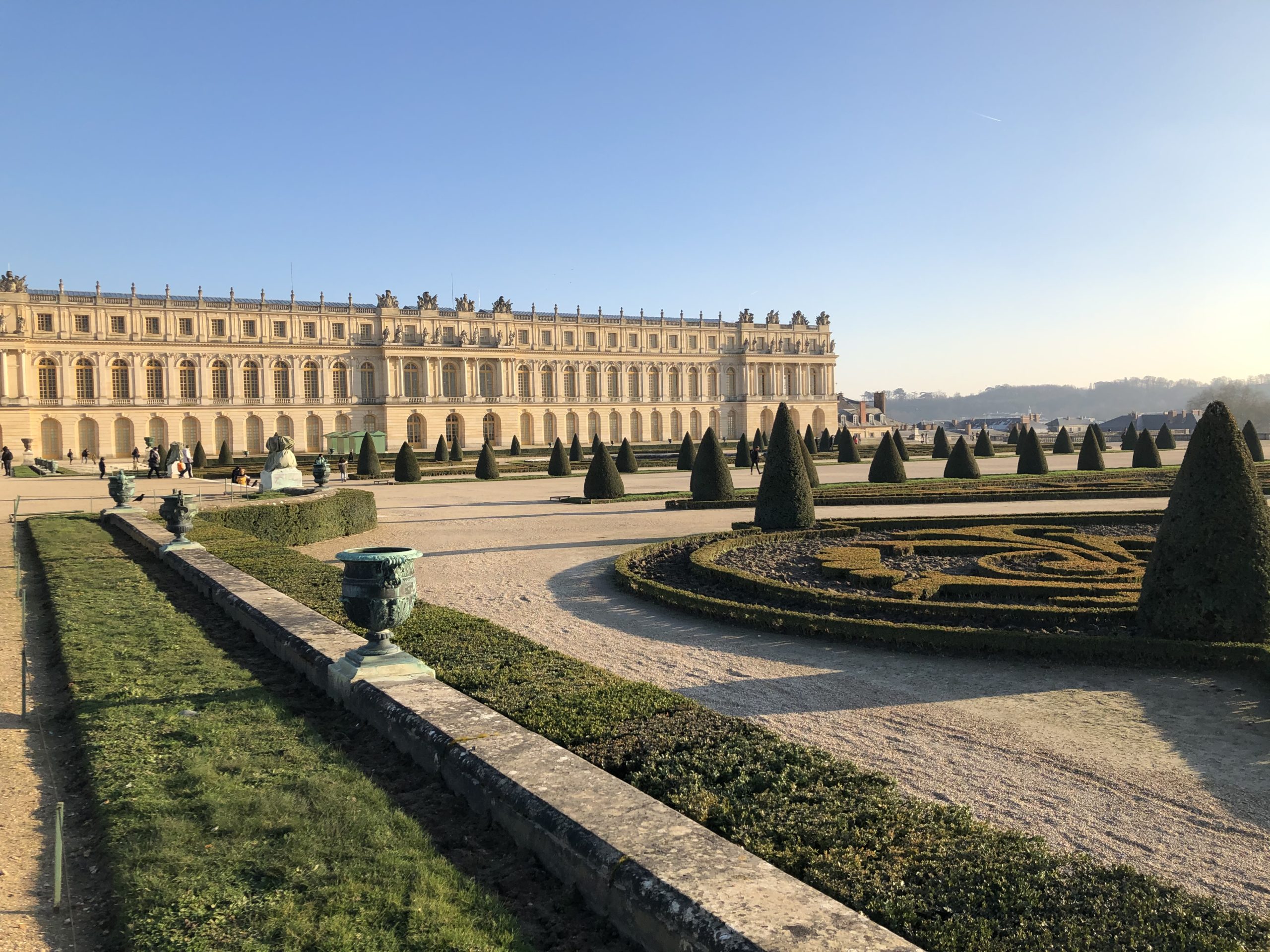
17 Sep French interior design influences on the Georgian era
French interiors during new-found elegance of the Georgian era
As specialist Georgian interior designers, we’re pretty well-versed in what was going on in the UK in the 1700s and the early 1800s in terms of Georgian interiors and buildings. But we are always keen to learn about the influences on Georgian interior design.
The three King Georges and the Prince Regent had the highly influential architects of the day from Robert Adam, John Wood the Elder and John Wood the Younger (here in Bath) to Sir John Soane and John Nash at their disposal. The UK was reaping the rewards of the Grand Tour taken by these (and many other) wealthy and highly educated gentleman. The influence of the grand architecture from Rome and Greece was resulting in the elegant designs of the day whilst the opening up of trade routes by the East India Trading Company brought fashions from the Far East and Asia to our interiors.
So, on a visit (before Lockdown!) to Versailles, I was interested to understand just what our closest European neighbours were up to at the time and what was influencing their architecture and interior design. How did they live, what were their aspirations and what drove the design and opulence of their interiors?

French influences on Georgian interior design
Not surprisingly they too were heavily influenced by the classical styles of Rome and Greece. The style developed during the reigns of Louis XIII, XIV and XV is most commonly referred to as Baroque.
Baroque was directly related to the social and economic context of that time. During the XVII and XVIII centuries, in France, the absolutist monarchy was at his highest.
The king saw himself as the centre of the universe, as a ruler designated by God and all the power was in his hands; this was especially true during the reign of Louis XIV. The king had the absolute authority to decide what to do with the monies of the State, so no project was too expensive or ambitious to be commissioned.
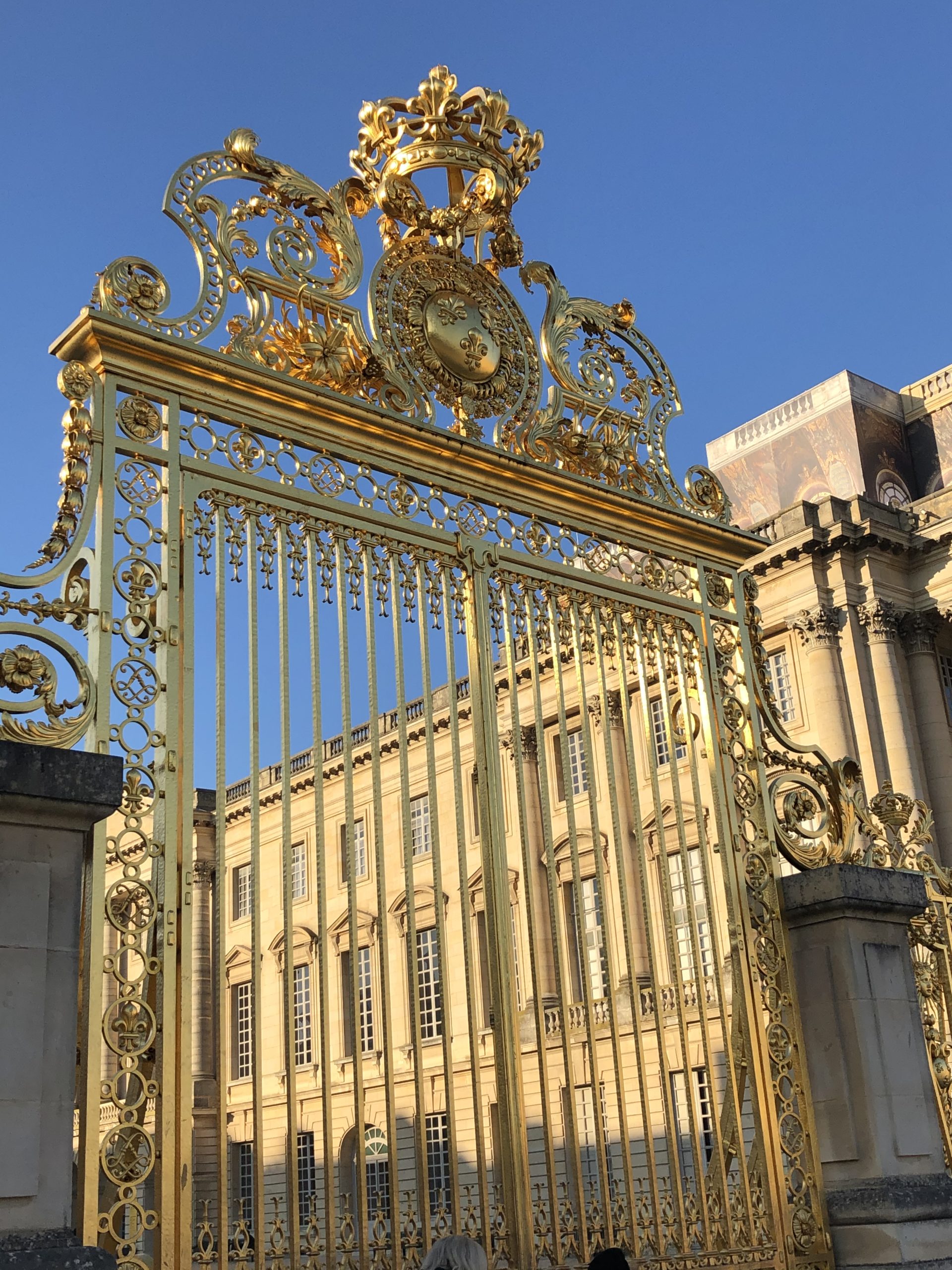
Therefore, the church was no longer the main object; this was a secular architecture, focused on the dwellings of the king and his court.
Louis XIV, who reigned from 1643 to 1715, built the Versailles Palace on the site of his father’s hunting lodge, a brick and stone chateau with sloping slate mansard roofs.
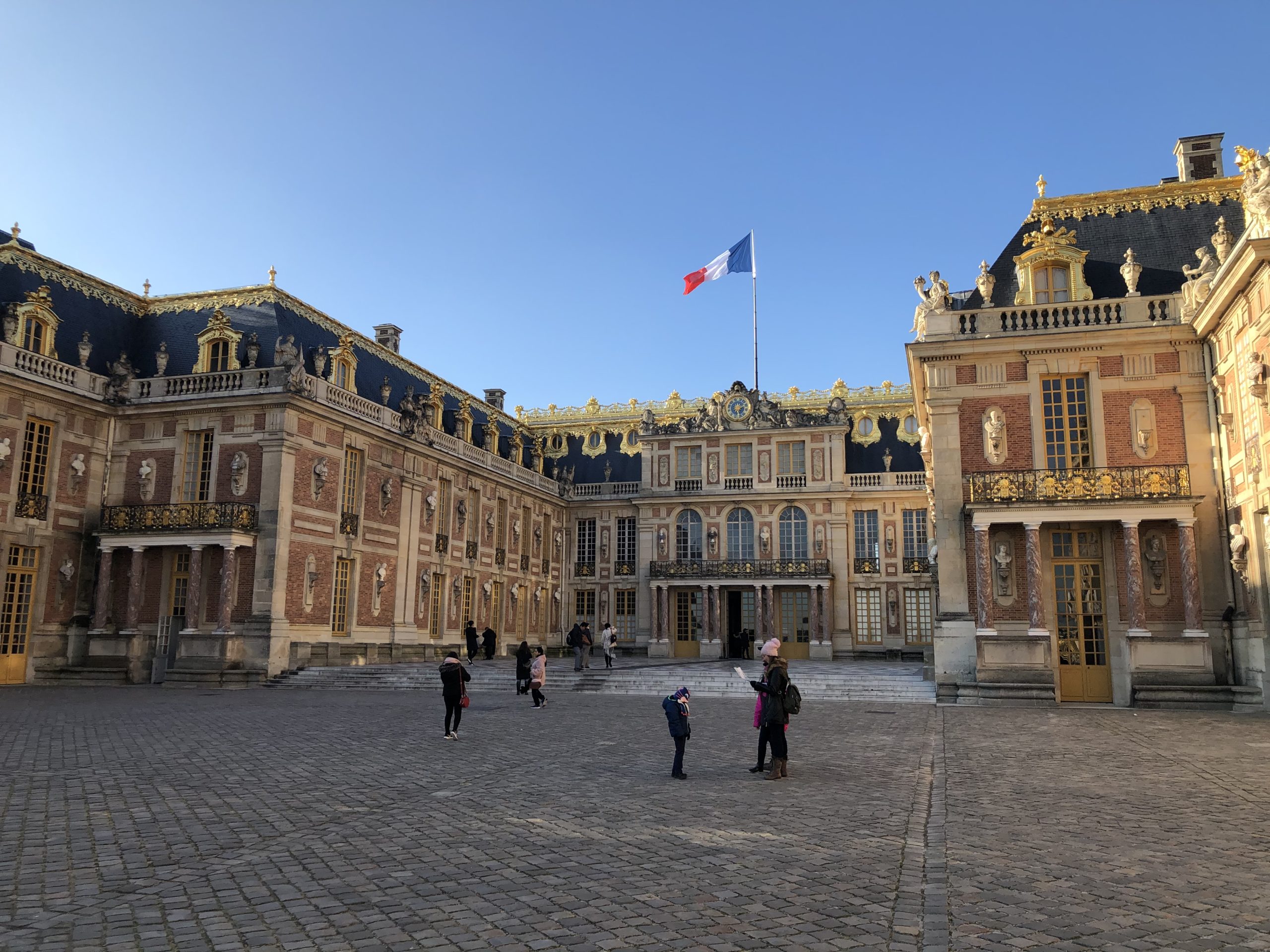
It then became grander and more monumental, with the addition of the colonnades and flat roofs of the new royal apartments in the French classical or Louis XIV style, as designed by Louis Le Vau and later Jules Hardouin-Mansart. It concluded in the lighter and more graceful neoclassical Louis XVI style completed by Ange-Jacques Gabriel in 1768.
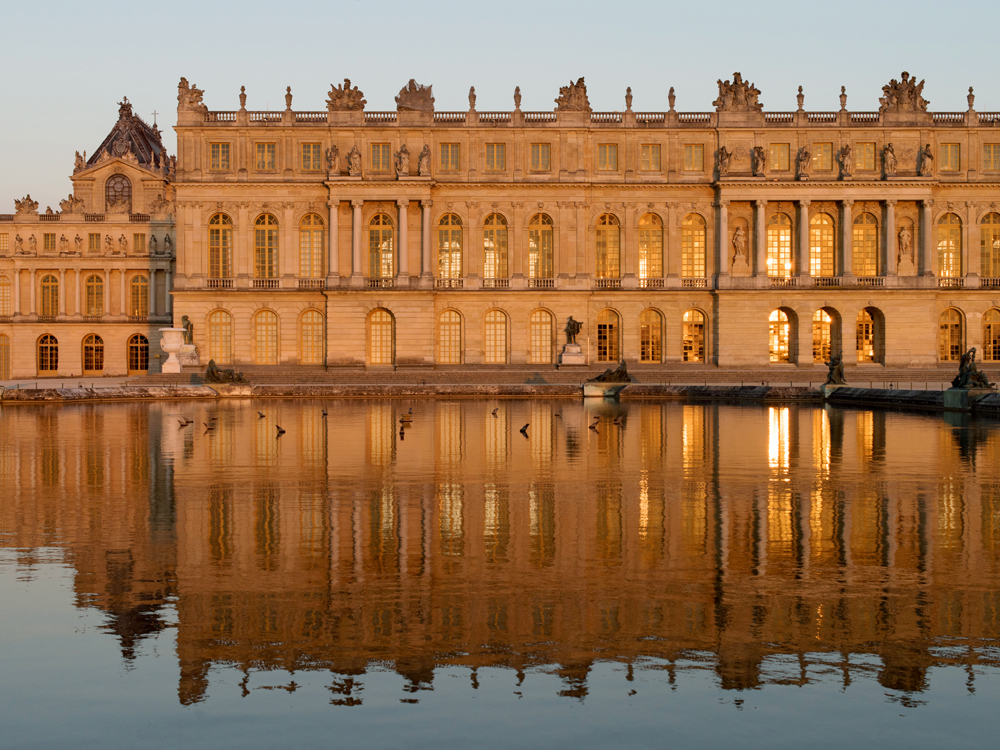
Ultimately the extended palace created 2,300 rooms spread over 63,154 m2. Louis XIV added a chapel, an opera house (more of that later) and huge state apartments that were open to visitors during the day and used for parties and ceremonies throughput the year. He built hundreds of apartments into which he moved some 5,000 courtiers and aristocrats in order that he could more closely control their activities, handing out grace and favour as much as removing them in order to ensure he reigned supreme.
Their use of stone was similar to many of the interiors of Georgian properties found in Spa towns such as Bath, Cheltenham and Harrogate. It was Parisien limestone compared to the UK local equivalents (such as Bath stone and ashlar) and relief friezes were carved to add decoration and marble floors were often designed to reflect or complement the ceiling designs, as was particularly a trend in Georgian interior design for Robert Adam in the UK. Grand stone staircases and ionic or Corinthian columns of grandiose proportions were ever present.
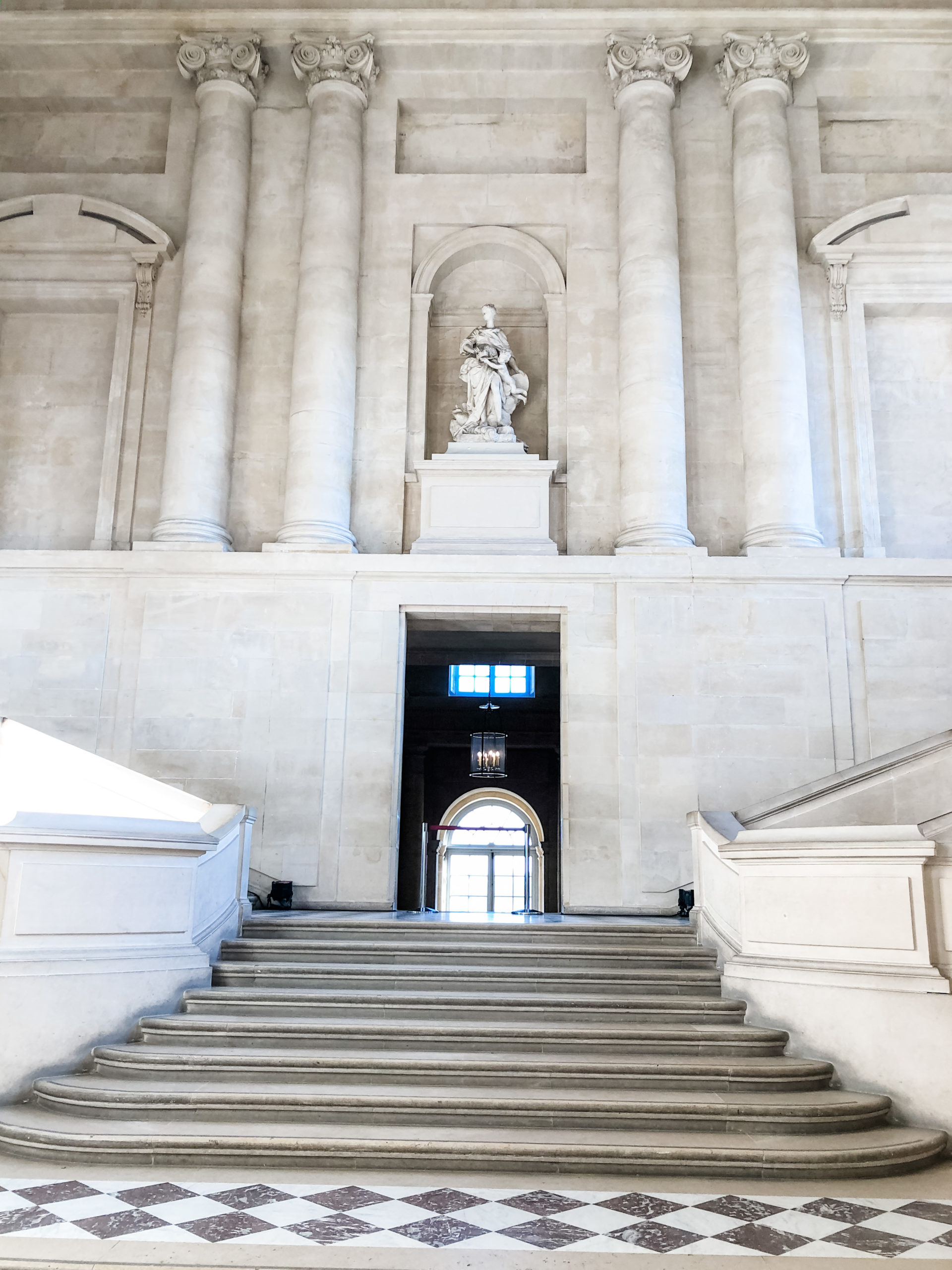
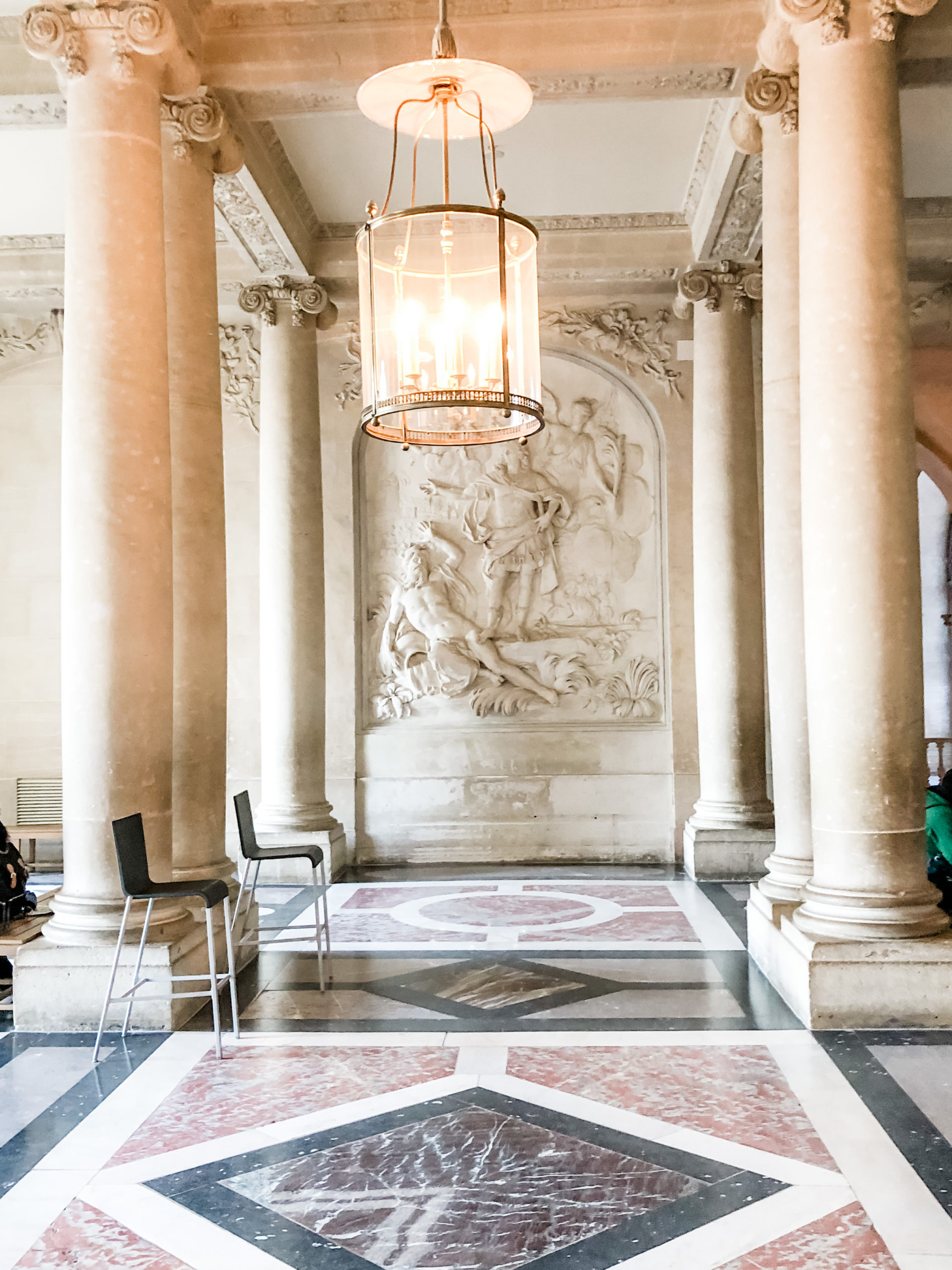

Louis XV (reign 1715 to 1774) was his great grandson and at a time when the power in Europe was shifting with England and Prussia becoming the dominant forces he married his 15 year old son Louis XVI off to a 14 year old Marie Antoinette, who was Austrian, in a bid to tie the French and Austrians together in an alliance against England and Prussia. The significance, in terms of the architecture at Versailles, was the design and build of the opera house, completed in 21 months, for the wedding ceremony of this young couple.
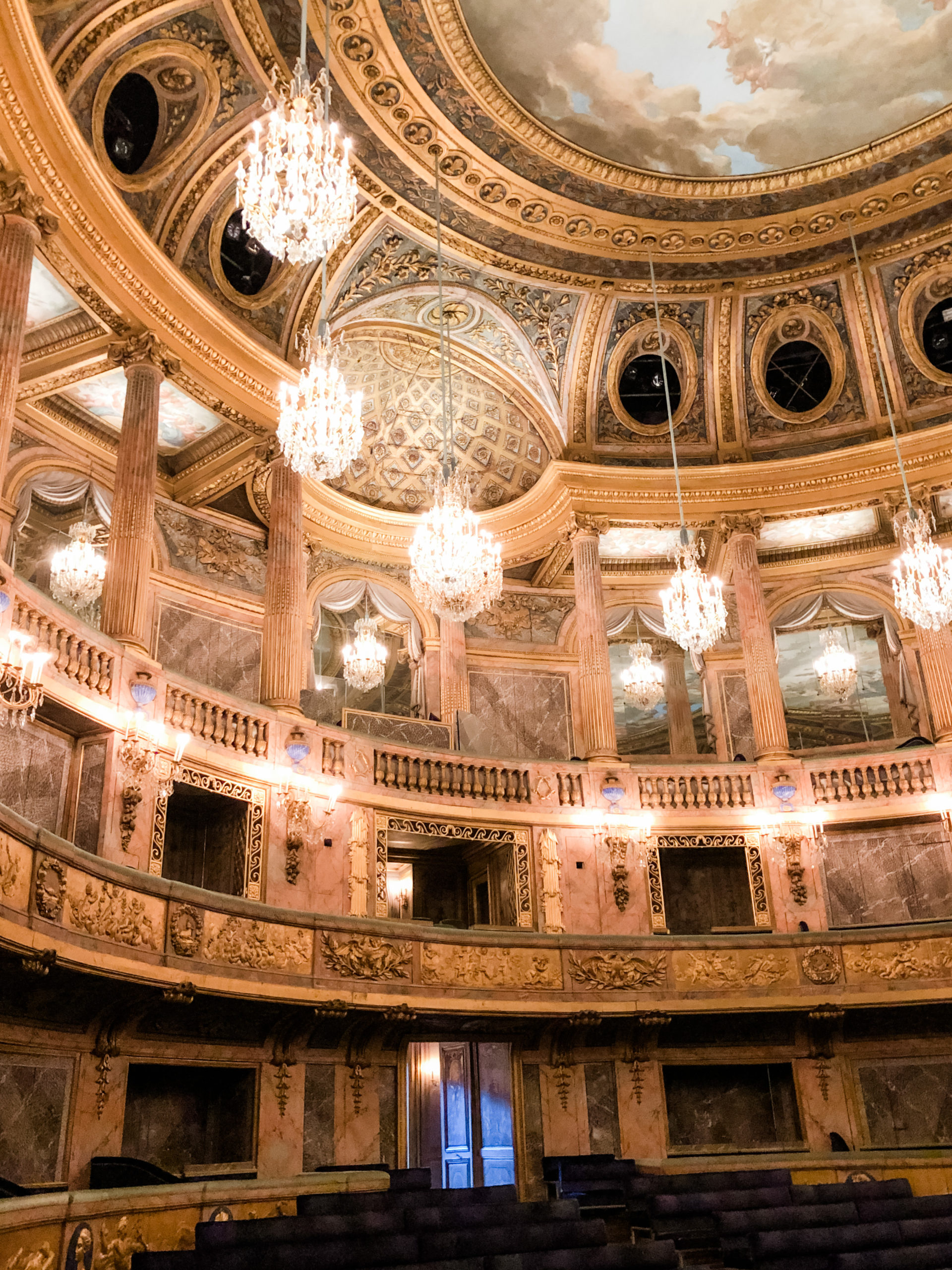
The Royal Opera of Versailles, designed by Ange-Jacques Gabriel (1698-82), which can seat up to 1200 guests was one of the earliest expressions of the Louis XVI style.
The opera house was the first of its kind in France. Previously venues of this nature were rectangular, this was oval (a shape found in Rome). The stage took up half of the oval and in doing so became the largest stage in Europe. The floor of the stalls were built on a jack system that could be raised and lowered depending on whether it was a seated concert, a dance or a dinner that was being hosted (all of which were part of the four-day wedding ceremony) so that the floor area of the stage could be incorporated into the main venue. Another ‘first’ in the design of this stunning space were the open balconies, rather than traditional theatre boxes. This meant no view restrictions. You could see and be seen. Mirrors with half chandelier wall sconces that looked to be full chandeliers due to the reflection in the mirror added glamour, space and light. An invite to watch the king dining at the wedding would have been seen as the social ticket of the century!
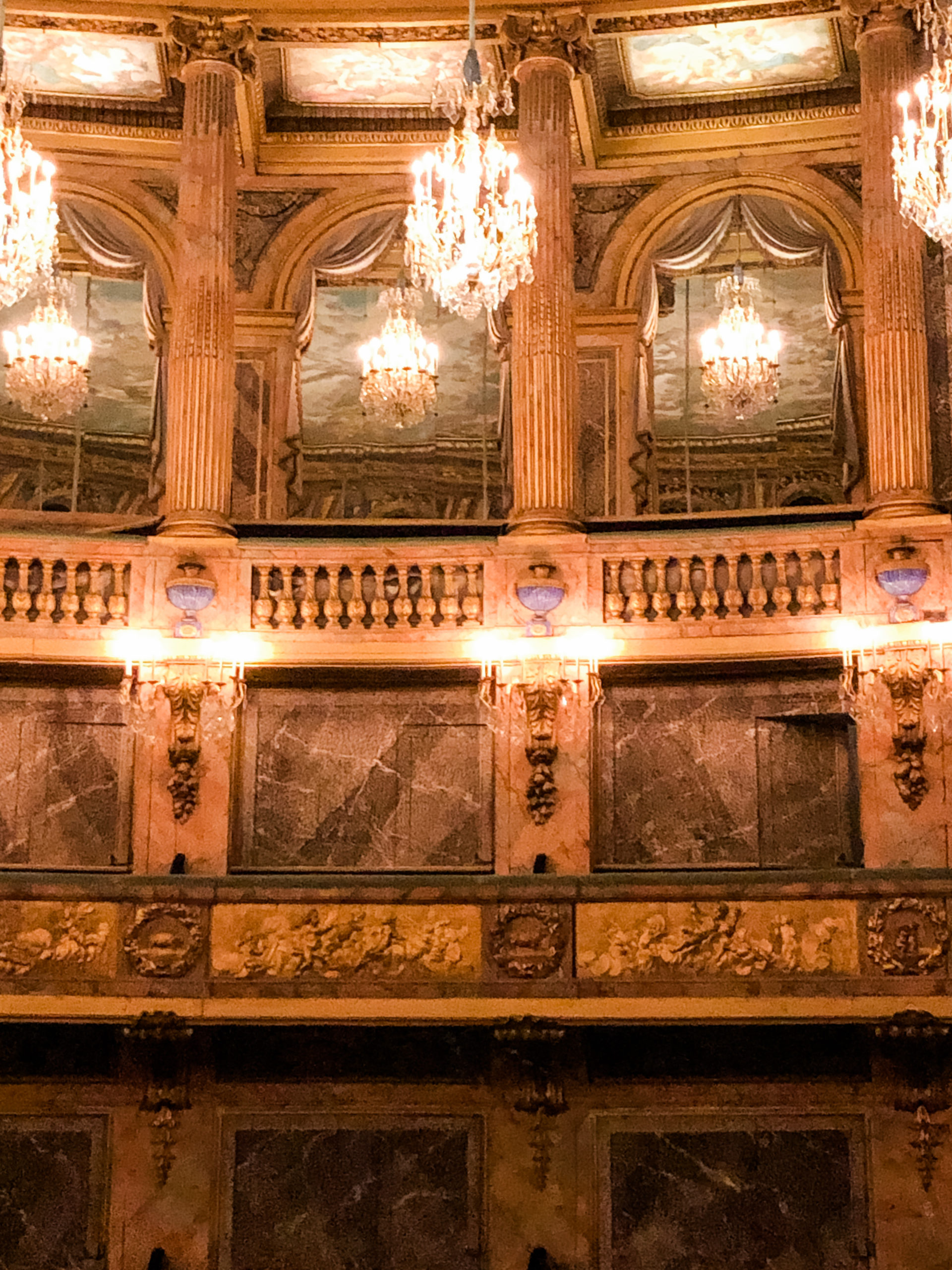
At Versailles the weather is only marginally better than in the UK, so the idea of creating indoor-outdoor spaces was an exciting development. The design of the ‘Galerie des Glaces’ or Hall of Mirrors placed large mirrors opposite floor to ceiling arched windows giving the 60m long hall a wonderful natural light. This space was where the courtiers and aristocrats would meet and promenade, viewing the antique sculptures inside and the formal gardens outside.
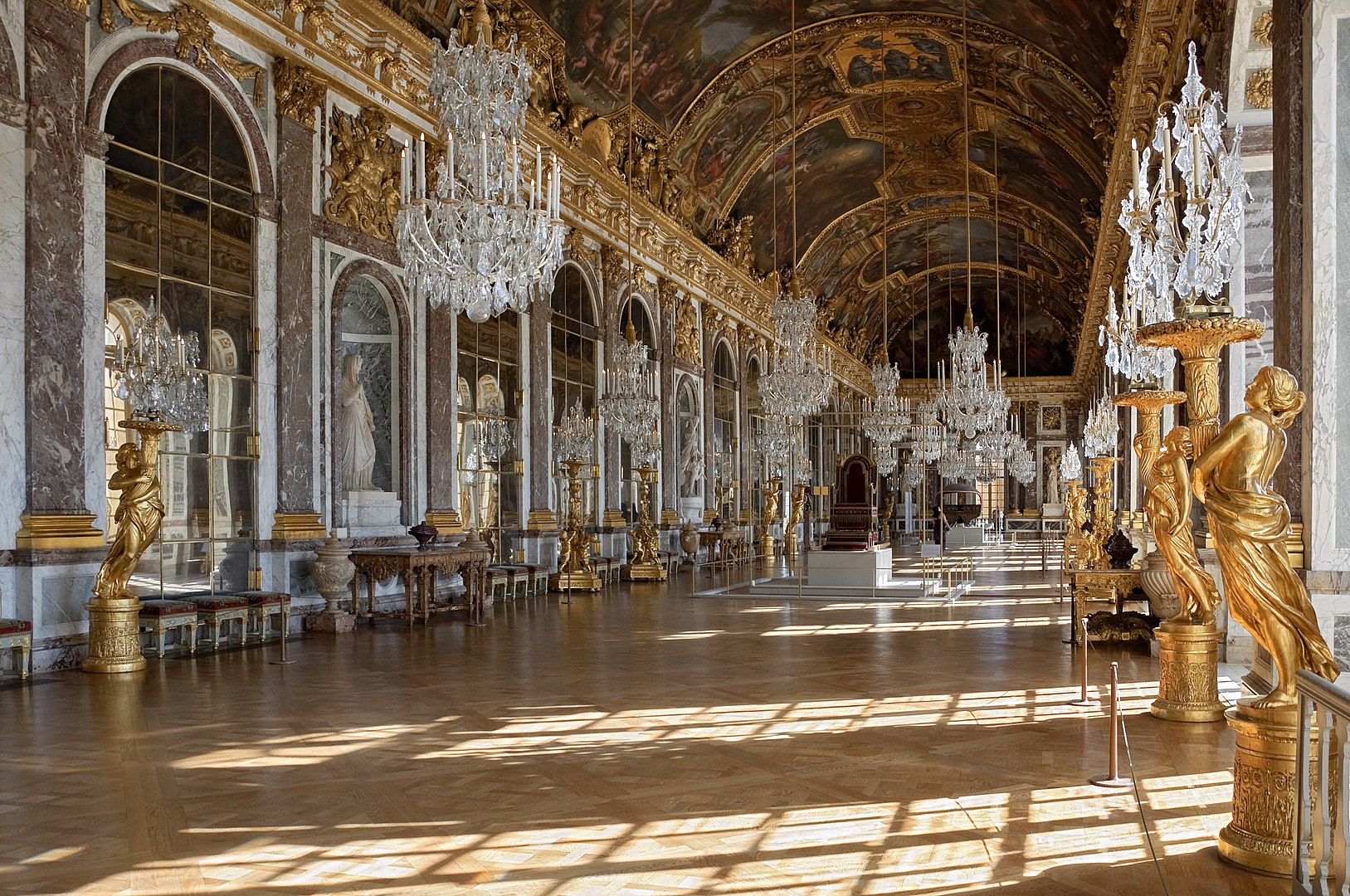
Chateau de Versailles – Galerie des Glaces
Photo credit Myrabella
Equally, The Gallery of Kings that was created in 1837, to house replicas of past kings ‘lying down’ tomb effigies placed upright, had windows added to similar affect.
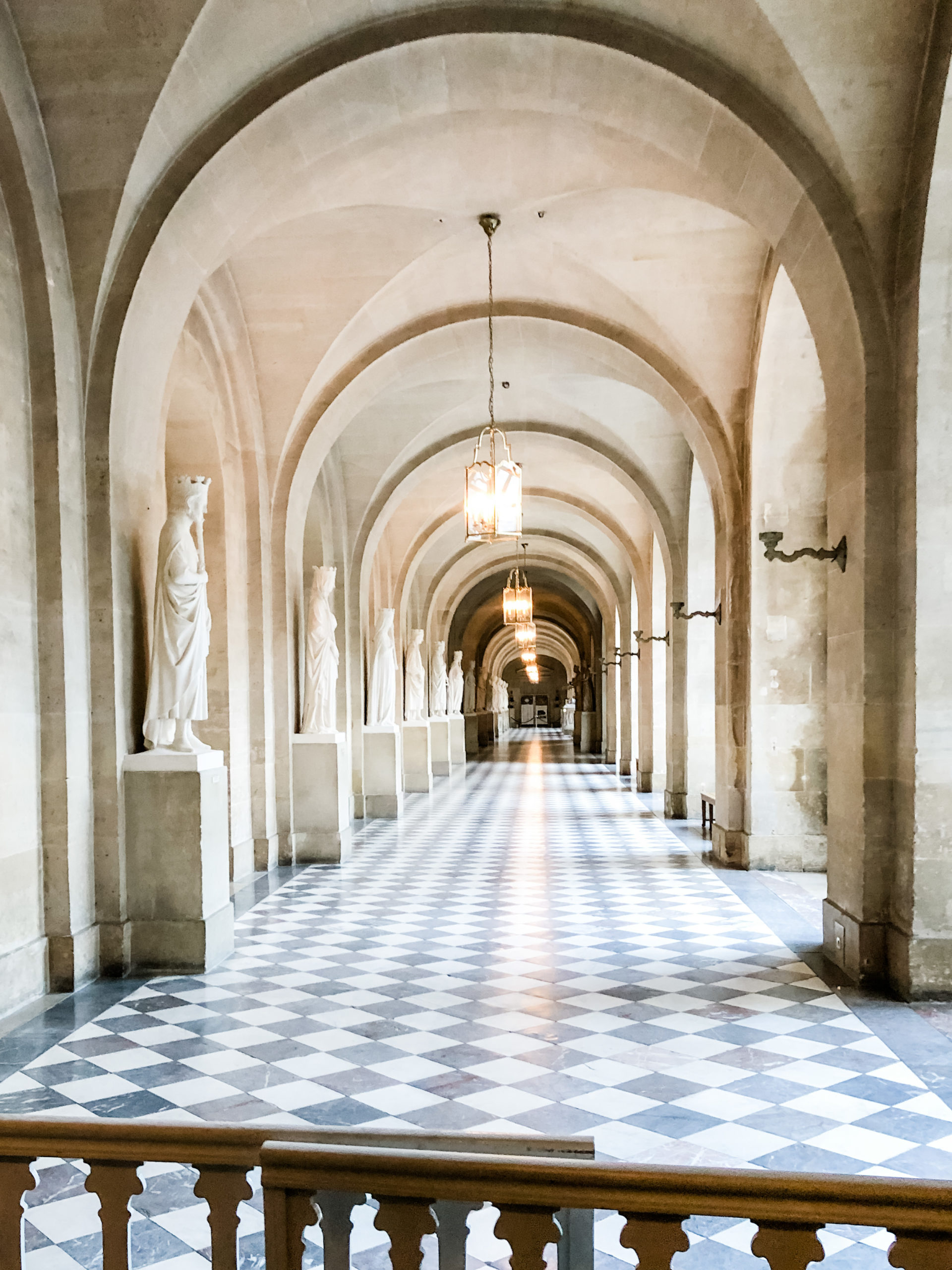
Finally, much the same as the etiquette at the palaces of our King Georges; Kensington, Kew, Buckingham, Windsor Castle and Brighton Pavilion, the King’s bedroom was not only the venue for the consummation of a marriage but also it was the most eminent place a meeting could take place. As such, the grandeur of the bedroom at Versailles with its gilding and silver and gold woven bed and wall drapes was second to none.
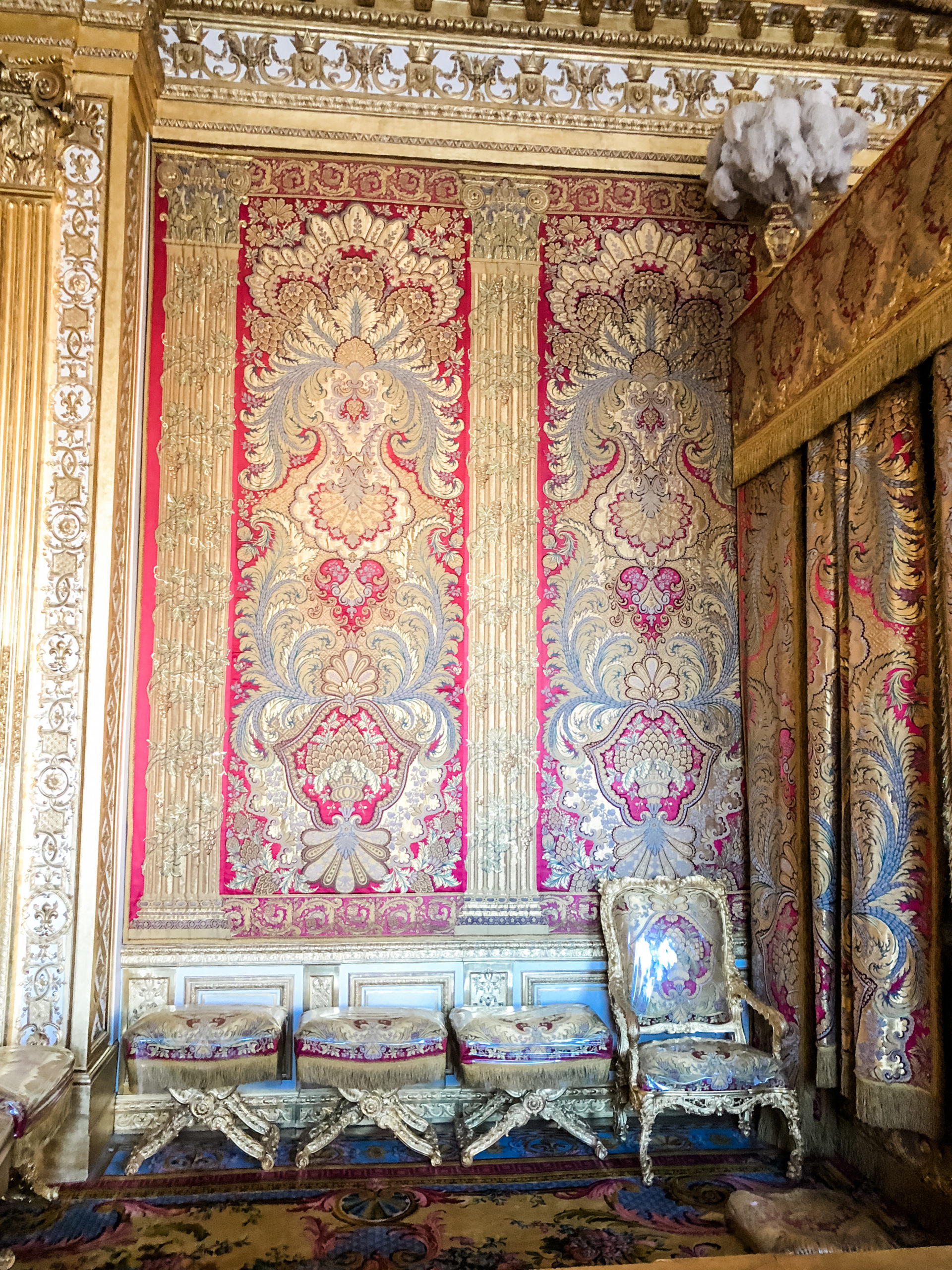
The Queen’s bedroom is equally as exquisite and distinctly feminine by comparison. In both the bed is topped by plumes of ostrich feathers which were clearly popular at the time. This fashion enjoyed a revival in the 1930s with the Burlesque scene and is now making a return to our interior schemes where a touch of flamboyance is appropriate.
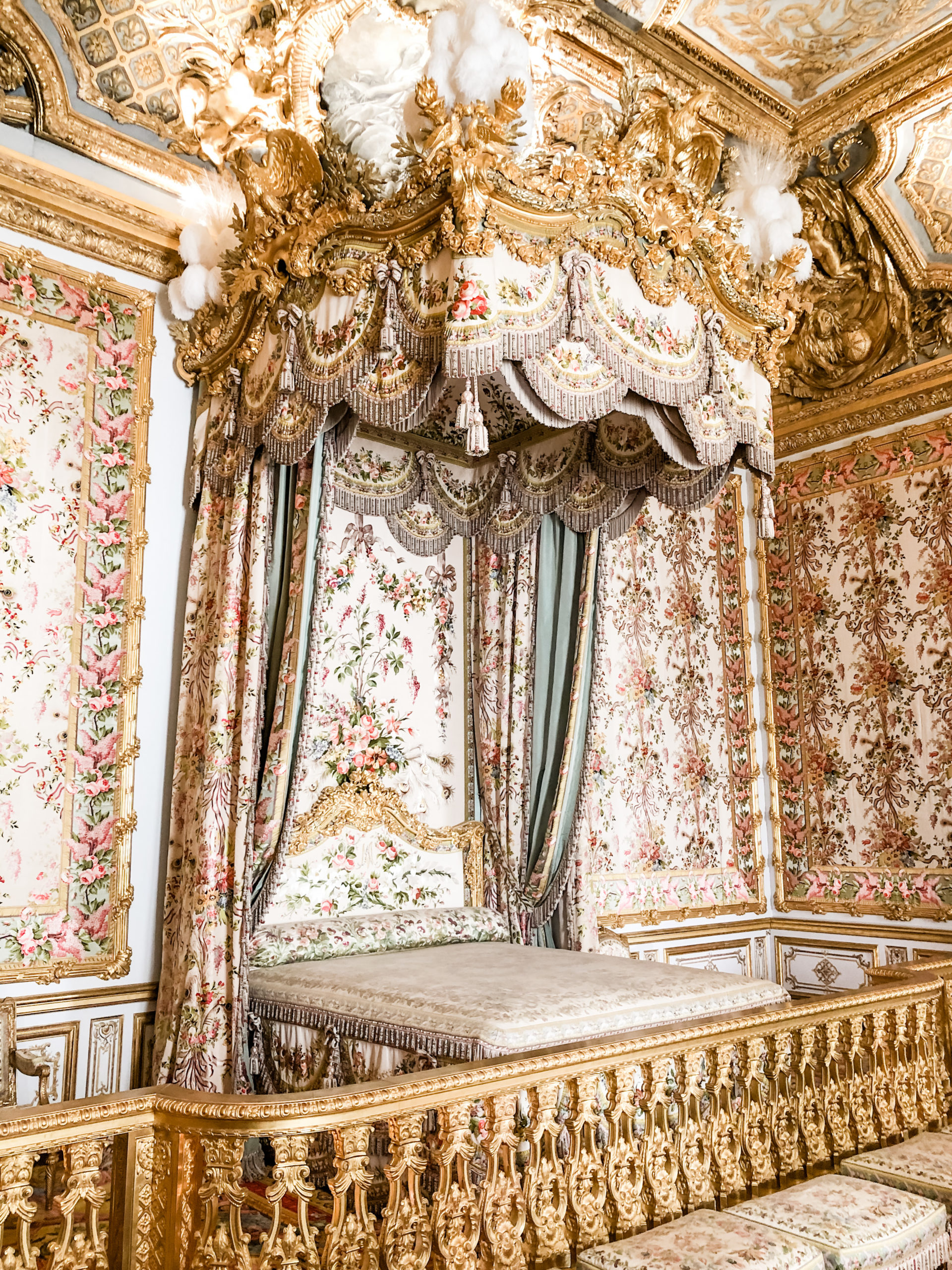
Expensive damask silks brought back from the Far East adorned the state apartments with grand (but essential as their only form of heating) classical fireplaces topped with large scale overmantel mirrors.
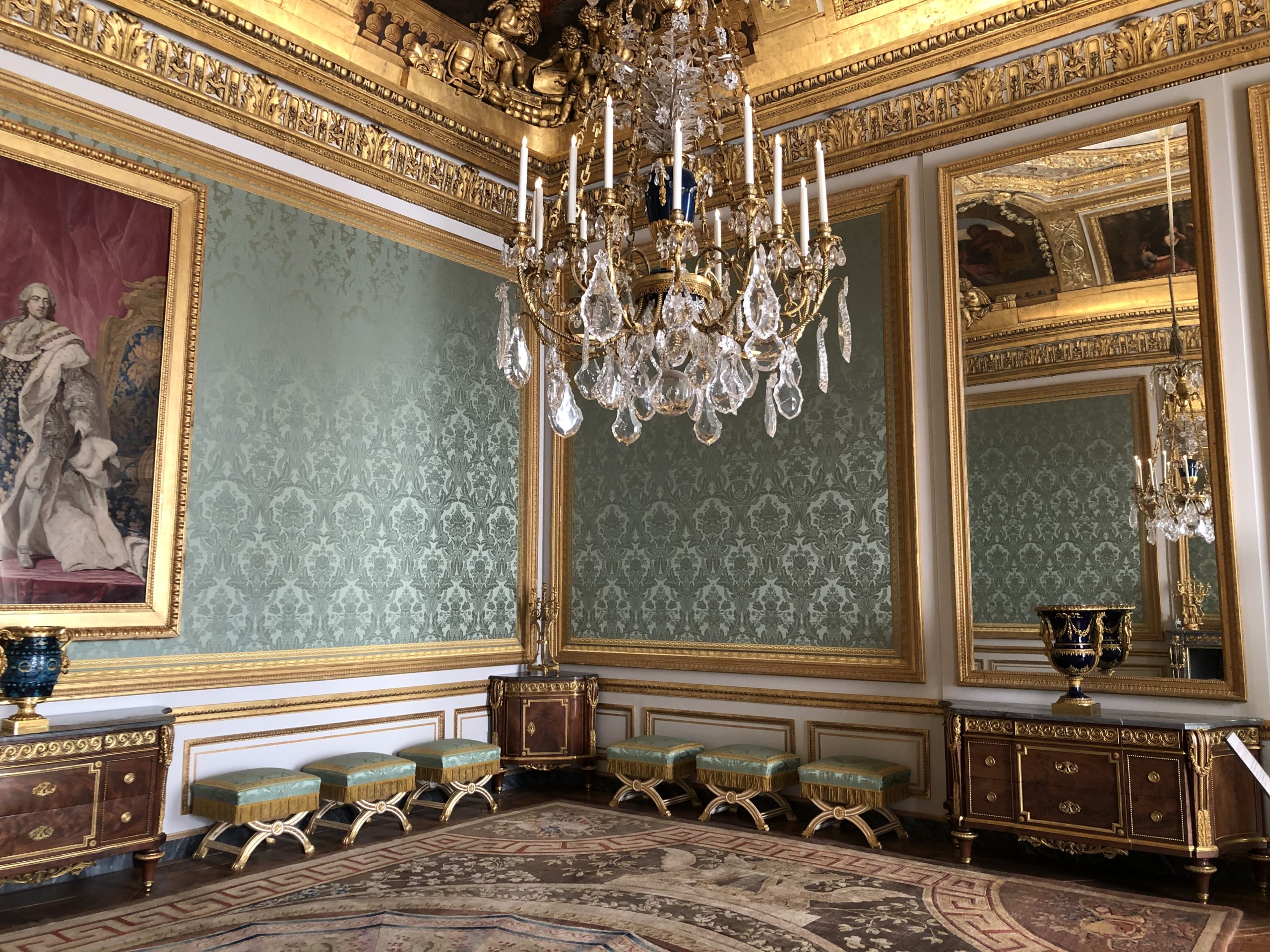
Panelling with gilding – a style that is found in the grandest of our own Georgian interiors in Bath and beyond – was also in favour as is shown below in the private dining room of the King. It was here that he ate with his Queen and family.
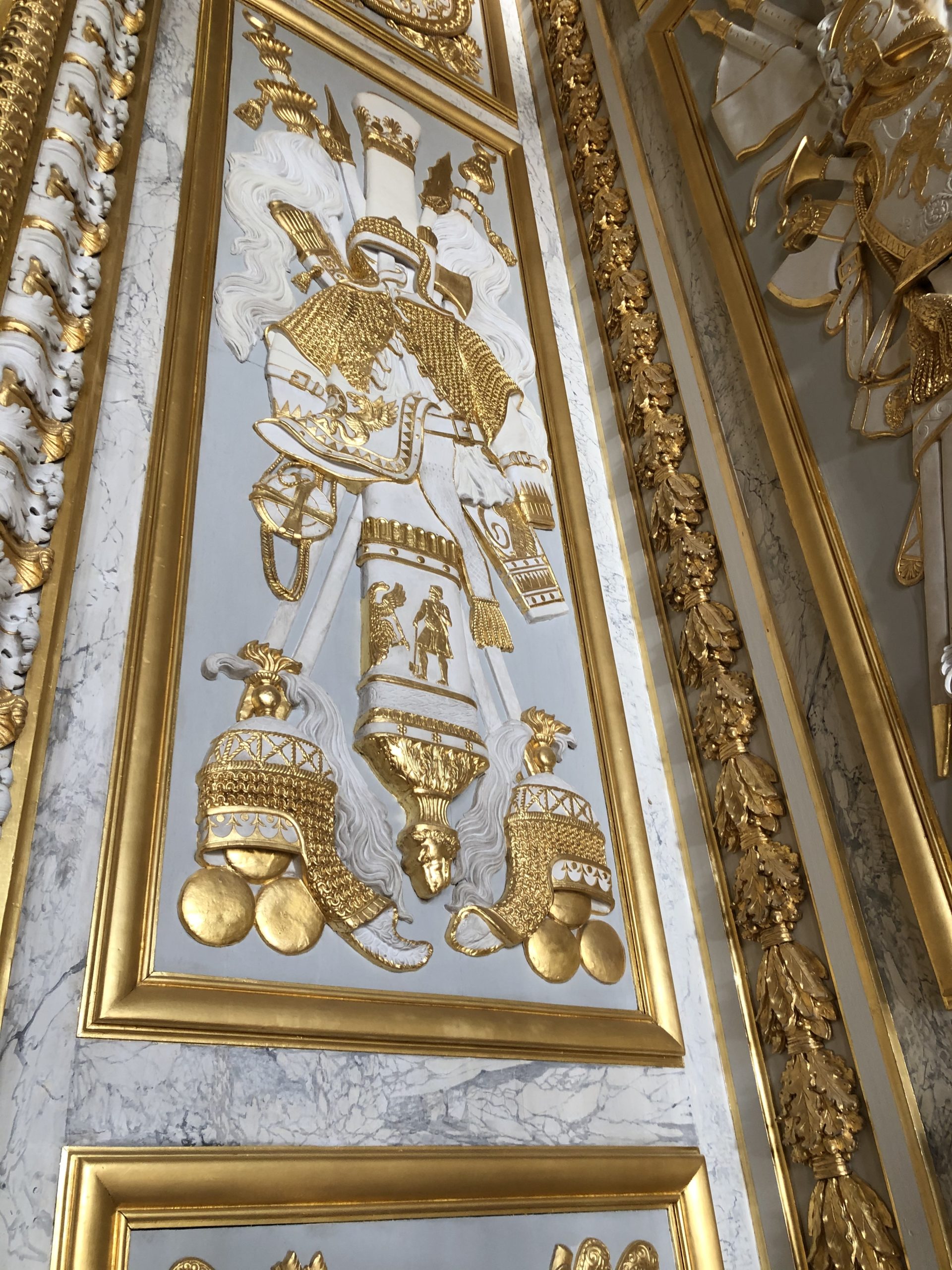
As you would expect the flooring at Versailles is either marble or wooden. The wooden parquet is mostly in the eponymous Versailles parquet style.
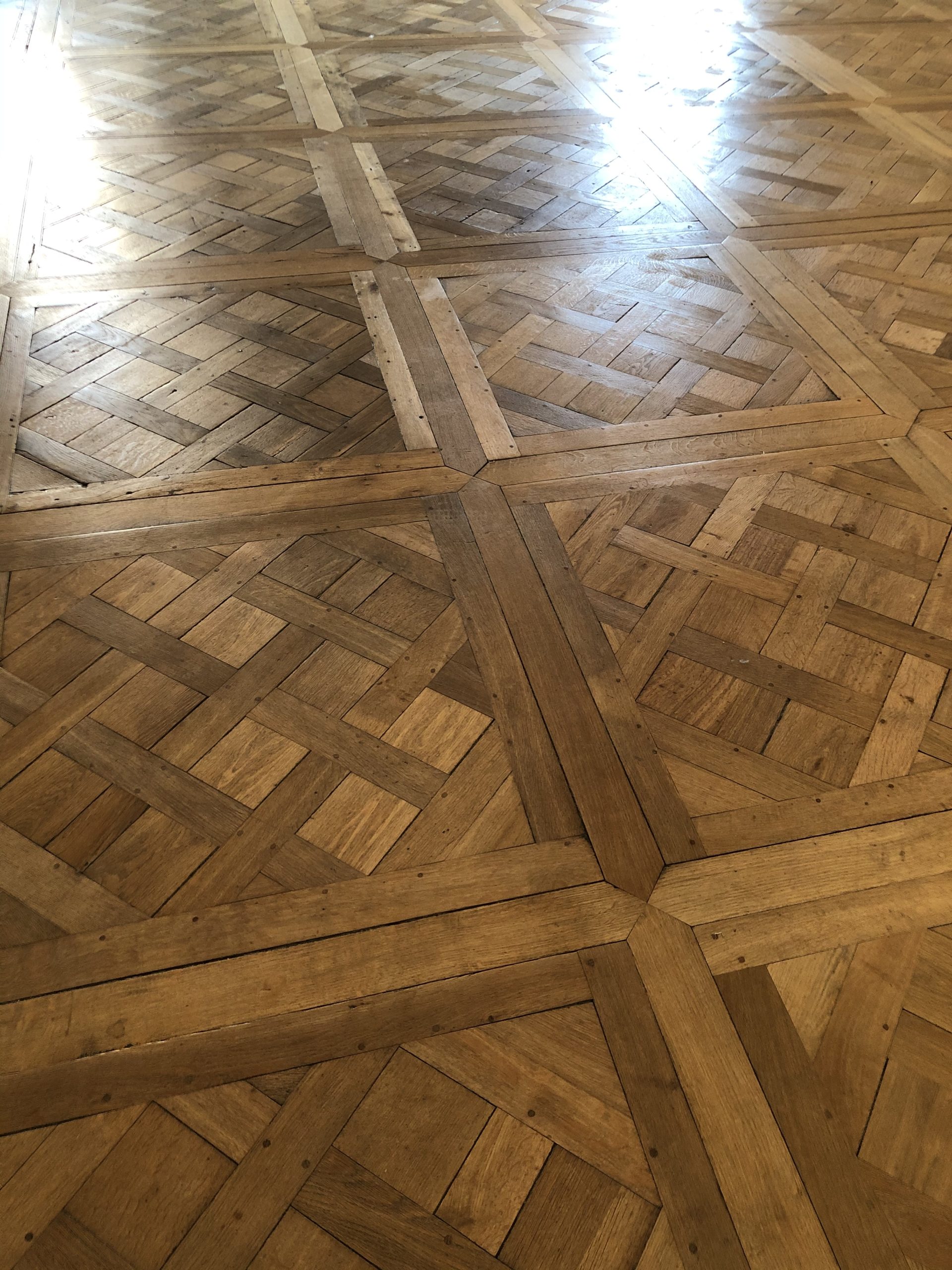
What is of course, so distinctly different about this period in France to the Georgian era in England is its ending. Whereas in England the Prince Regents reign was superseded by his brother William IV and the Royal family (although in a ceremonial form) still survives today. Whereas in France the reign of Louis XV was bankrupted by wars and set the stage for the French Revolution only 15 years later.
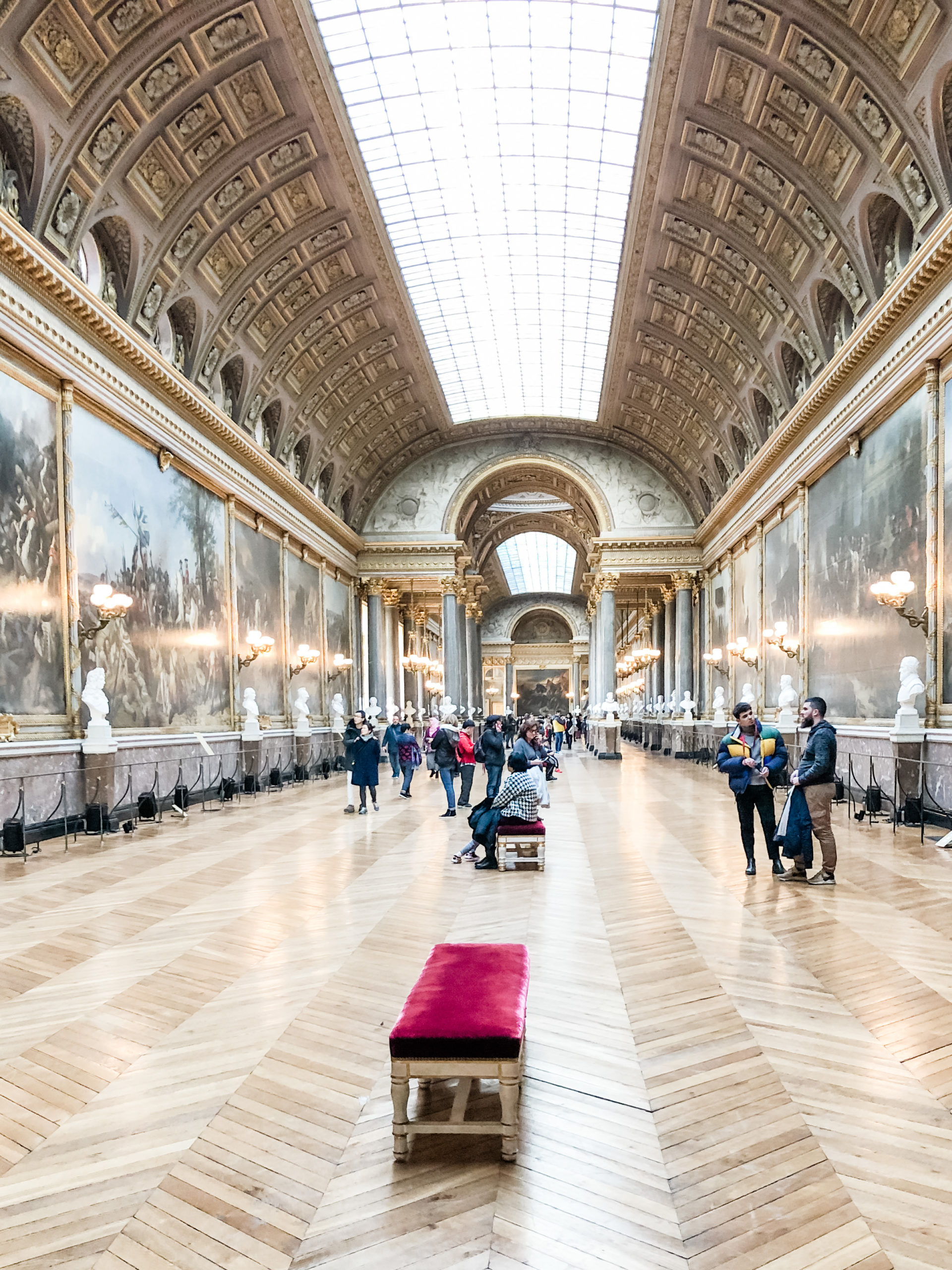
Louis XVI died at the guillotine on 21 January 1793. He was the last king to live at the Palace of Versailles, and the revolutionaries duly gave him the nickname “Louis the Last”!
If you’d like any help or advice on interiors for your Georgian house, get in touch with Etons of Bath today on 01225 639002




Sorry, the comment form is closed at this time.